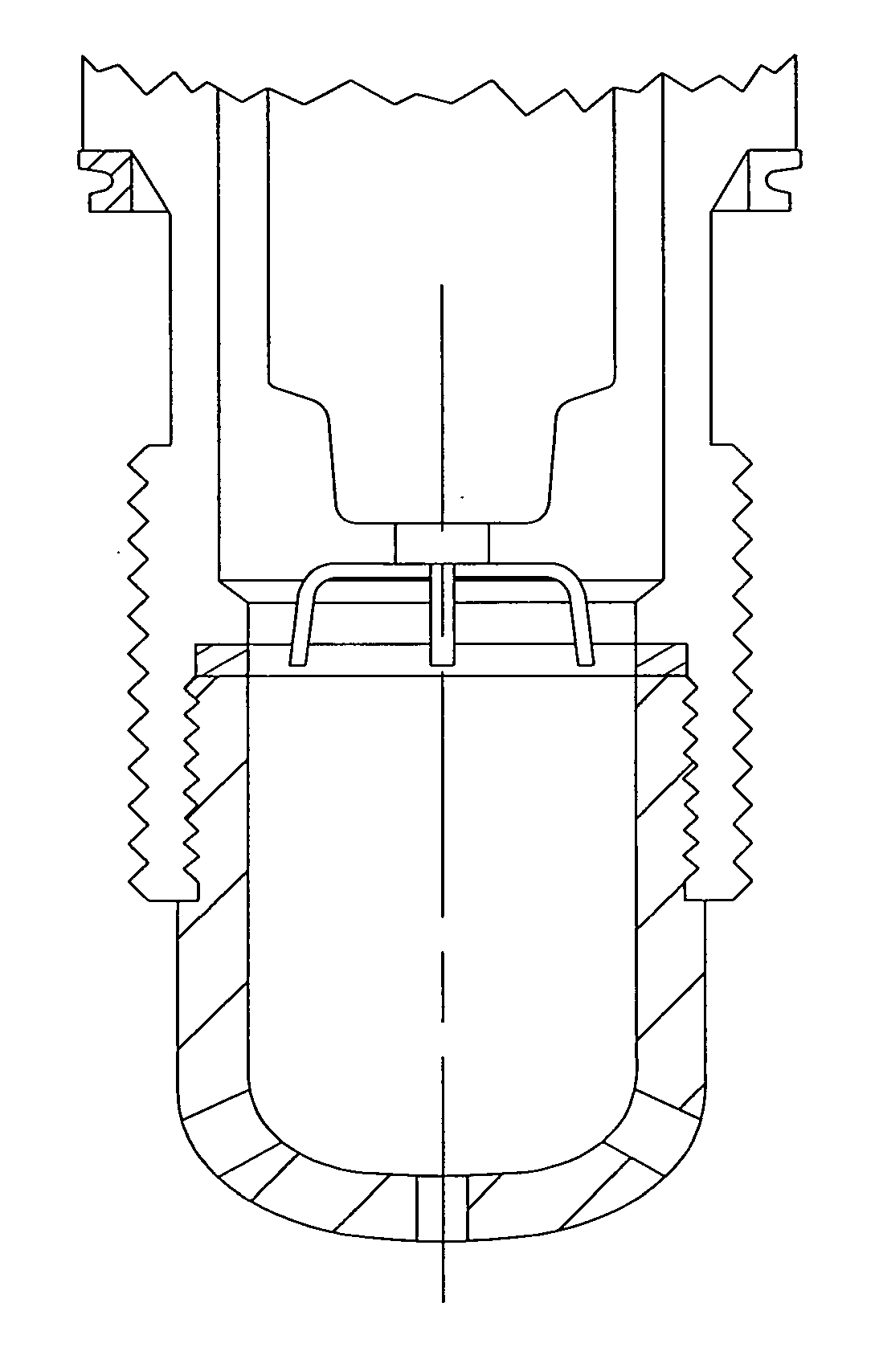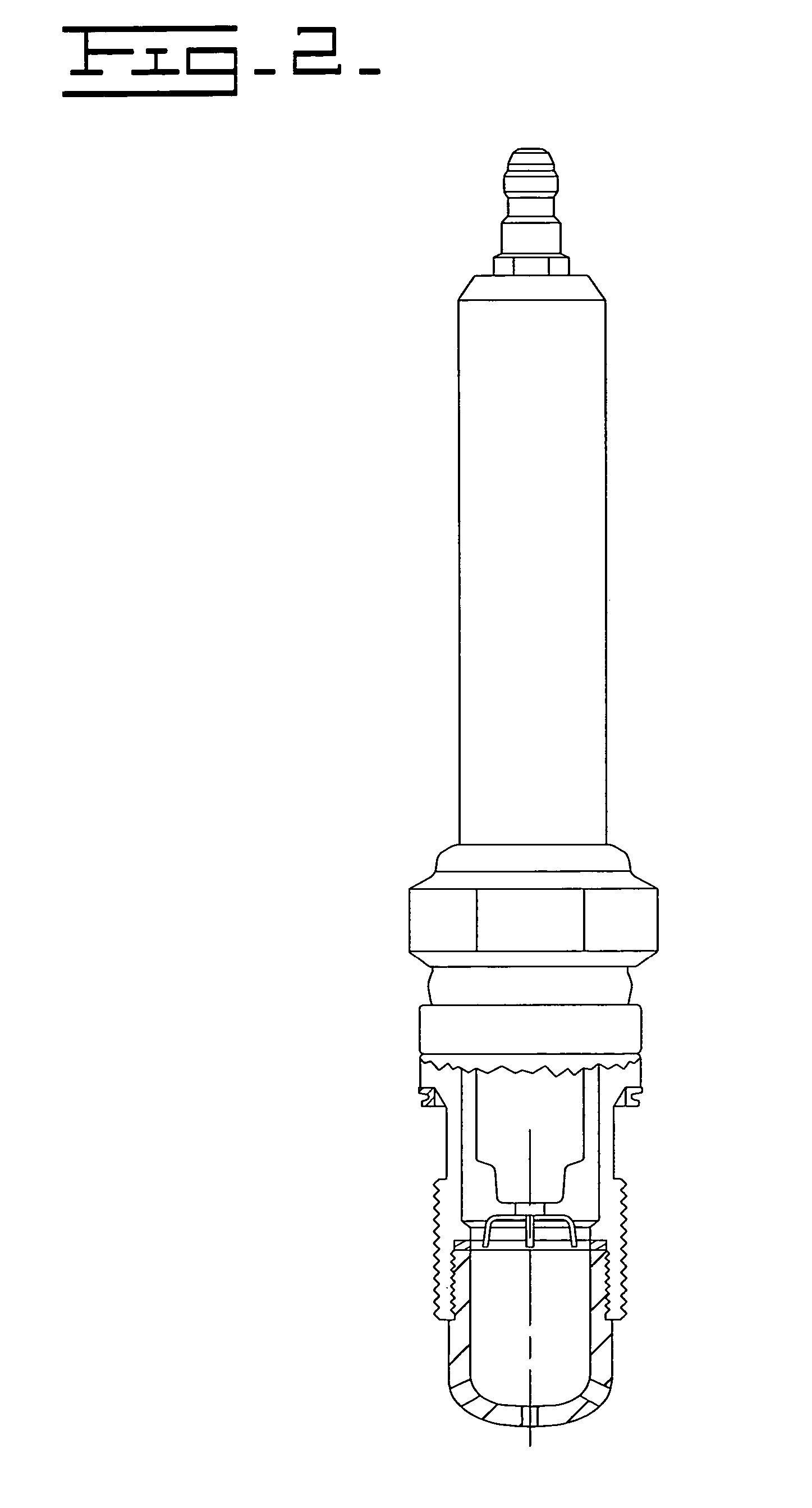Pre-chamber type spark plug
- Summary
- Abstract
- Description
- Claims
- Application Information
AI Technical Summary
Problems solved by technology
Method used
Image
Examples
Embodiment Construction
[0016] In FIG. 1, a portion of a spark ignition engine 10 is shown. The engine 10 includes a block 12 having a cylinder bore 14 therein. A piston 16 is movably positioned within the cylinder bore 14 in a conventional manner. The block 12 defines a top surface 18.
[0017] A cylinder head 22 defines a top surface 24 and a bottom surface 26. The bottom surface 26 of the cylinder head 22 is removably attached to the top surface 18 of the block 12 in a conventional manner, such as by a plurality of bolts, not shown. A gasket 28 is normally interposed between the top surface 18 of the block 12 and the bottom surface 26 of the cylinder head 22. A combustion chamber 30 is defined between the bottom surface 26 of the cylinder head, the cylinder bore 14 of the block, and the piston 16. The cylinder head 22 has at least one intake valve mechanism 34 and at least one exhaust valve mechanism 36 operatively positioned therein. The intake valve mechanism 34 and the exhaust valve mechanism 36 can be...
PUM
 Login to View More
Login to View More Abstract
Description
Claims
Application Information
 Login to View More
Login to View More - R&D
- Intellectual Property
- Life Sciences
- Materials
- Tech Scout
- Unparalleled Data Quality
- Higher Quality Content
- 60% Fewer Hallucinations
Browse by: Latest US Patents, China's latest patents, Technical Efficacy Thesaurus, Application Domain, Technology Topic, Popular Technical Reports.
© 2025 PatSnap. All rights reserved.Legal|Privacy policy|Modern Slavery Act Transparency Statement|Sitemap|About US| Contact US: help@patsnap.com



